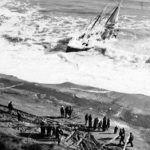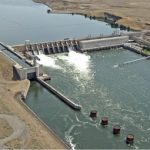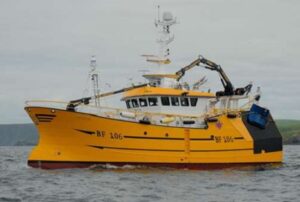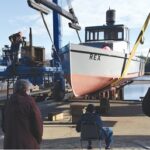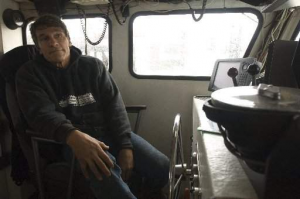Daily Archives: July 6, 2022

NOAA – A Failed Agency
The Magnuson Act became the law of the land in 1977. Seven years later, the 200-mile limit between Canada and the United States was decided at the world court in the Hague, Netherlands. Both had good intentions, however both failed. Magnuson was supposed to keep fish stocks at a sustainable level and keep maritime communities, like Gloucester prosperous. It made sense. Plenty of fish meant plenty of fishing, processing and a strong waterfront economy. After NOAA Magnuson was signed into law and kicked out the foreign vessels, they contradicted their own intentions of “overfishing” and built up the American fleet by offering government-backed low interest loans. This set off a frenzy of boat building at a time when fish stocks were plentiful. The fleet doubled in size in less than a decade. This offset the gains made from keeping foreign vessels out. Well, it backfired. While we like to think that the foreign fleets raped our fish stocks, it was really NOAA’s’ misguided encouragement and failed policies. “Go get’em boys, it’s all ours now” was their signal to fishermen. >click to continue<, By Sam Parisi. Gloucester, Mass. 18:32
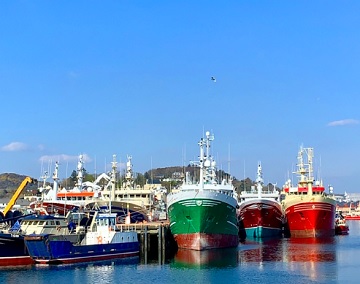
Seafood Sector Faces Shutdown Over Rising Fuel Prices
Ireland’s fishing and fish producer organisations say they are under threat of being wiped out by high energy prices. In turn, jobs and food security is at risk. A joint statement from eight groups is calling on Government to act now to claim available EU funds to compensate the seafood sector and get the situation under control. Teachta Mac Lochlainn said: “I am again appealing to Minister McConalogue to urgently take action on this crisis that is about to close down our fishing industry. The fishing industry in Ireland estimates that fuel needs to be cheaper than 60 cent a litre for Irish trawlers to run profitably. Fuel is now costing €1.30 or more. That is the scale of the crisis. >click to read< 15:14
Athearn Marine Agency Boat of the Week: 72′ Steel Dragger with Permit, Cat 3412
To review specifications, information, and 50 photos’, >click here<, To see all the boats in this series >click here<
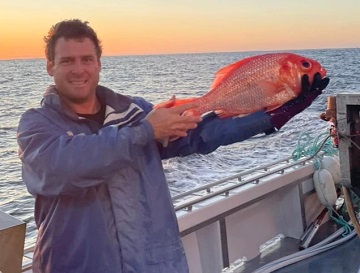
Commercial fishers in Western Australia say fuel costs will push up seafood prices
Petrol prices have surged by more than 25 per cent since the start of the year. The dramatic price increase has led some in the industry to make hard decisions around what to charge for their catch, warning it could lead to less local produce on the plate. Bunbury commercial fisher Brian Simone said his prices were based on a fuel price between $1 to $1.50 litre. However, he said a surge in fuel costs beyond $2 a litre was making it hard to sell his fish. Mr Simone said in his 45 years in the industry he had not seen the price of fuel rise so quickly. “We started off 20 cents a litre back in ’79, and now it’s $2.50 a litre,” he said. >click to read< 11:04
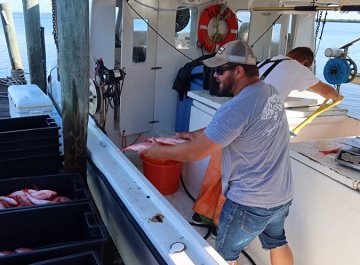
Potential aquaculture sites in Gulf of Mexico concern commercial fishermen
Capt. Casey Streeter’s crew is waist deep in the commercial icebox on its 36-foot Thompson boat. Ice is shoveled overboard, while fish are pulled from the ice into bins, some separated by size and others by species. Fishermen Greg Trammell and Jimmy Bergan just returned from being on the water for seven days. Bins and baskets full of fish filled to the rim as they offload their catch to be sold at Island Seafood Market in Matlacha. It is owned by Streeter and his wife, where they catch and sell their own fish. Streeter is a first-generation fisherman, fishing commercially for 10 years. Streeter’s livelihood relies on the health of marine ecosystems. With the National Oceanic and Atmospheric Administration’s search for aquaculture opportunity areas in the Gulf of Mexico, he fears the lifeline of his career may be at stake. >click to read< 09:35
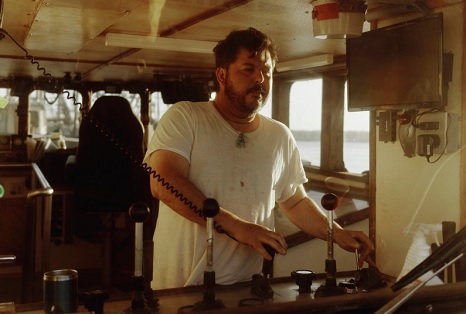
How Foreign Private Equity Hooked New England’s Fishing Industry
Before dawn, Jerry Leeman churned through inky black waters, clutching the wheel of the fishing vessel F/V Harmony. The 85-foot trawler, deep green and speckled with rust, was returning from a grueling fishing trip deep into the Atlantic swells. Leeman and his crew of four had worked 10 consecutive days, 20 hours a day, to haul in more than 50,000 pounds of fish: pollock, haddock and ocean perch, a trio known as groundfish in the industry and as whitefish in the freezer aisle. Leeman and his crew are barely sharing in the bounty. On deck, Leeman held a one-page “settlement  sheet,” the fishing industry’s version of a pay stub. Blue Harvest charges Leeman and his crew for fuel, gear, leasing of fishing rights, and maintenance on the company-owned vessel. Across six trips in the past 14 months, Leeman netted about 14 cents a pound, and the crew, about 7 cents each — a small fraction of the $2.28 per pound that a species like haddock typically fetches at auction. >Photos, click to read< 08:01
sheet,” the fishing industry’s version of a pay stub. Blue Harvest charges Leeman and his crew for fuel, gear, leasing of fishing rights, and maintenance on the company-owned vessel. Across six trips in the past 14 months, Leeman netted about 14 cents a pound, and the crew, about 7 cents each — a small fraction of the $2.28 per pound that a species like haddock typically fetches at auction. >Photos, click to read< 08:01






































